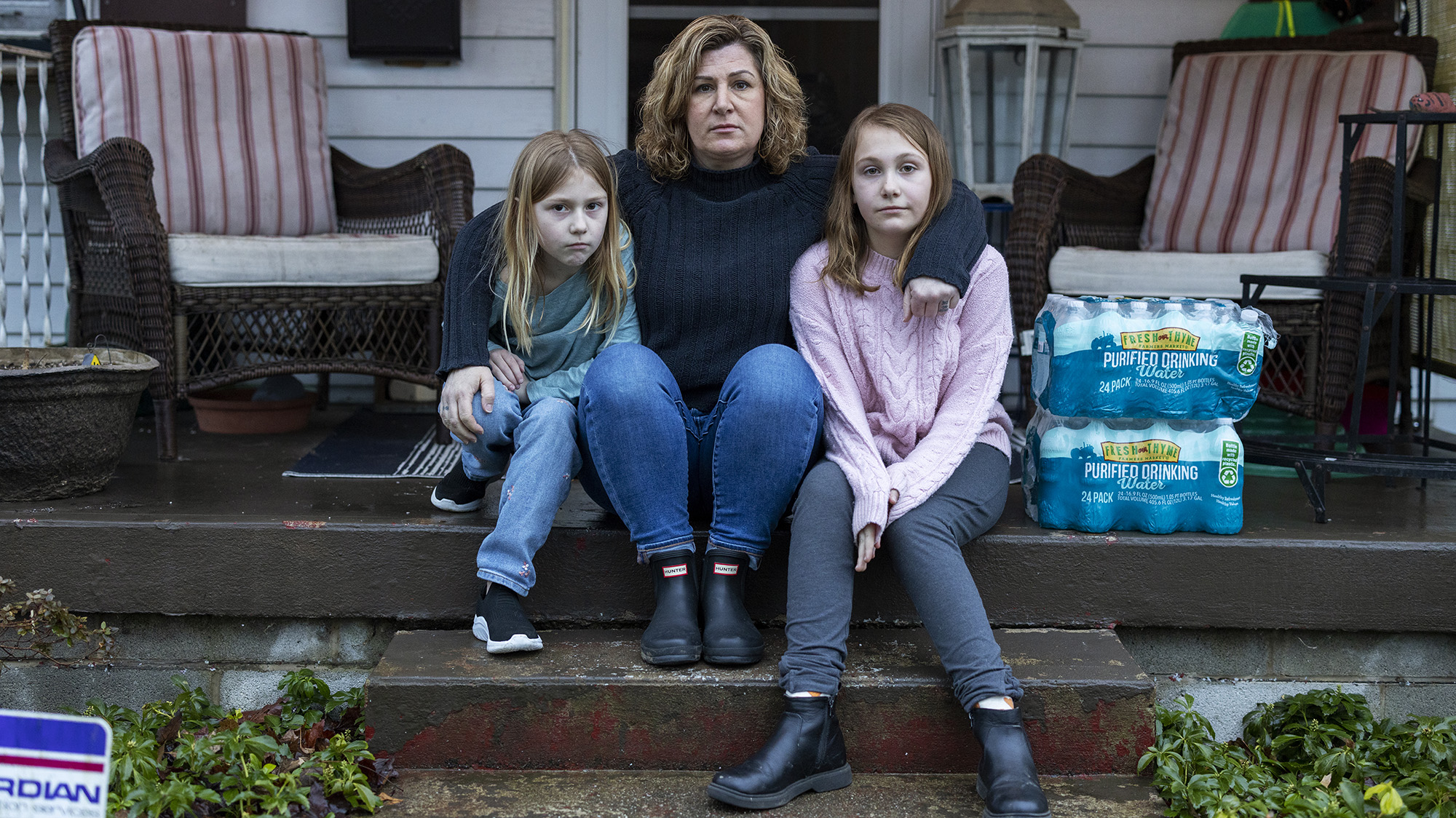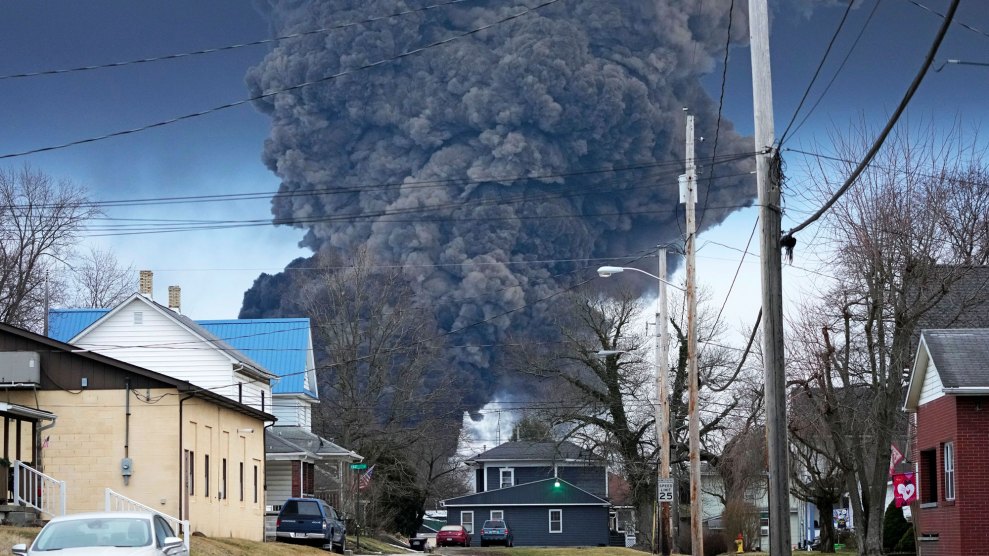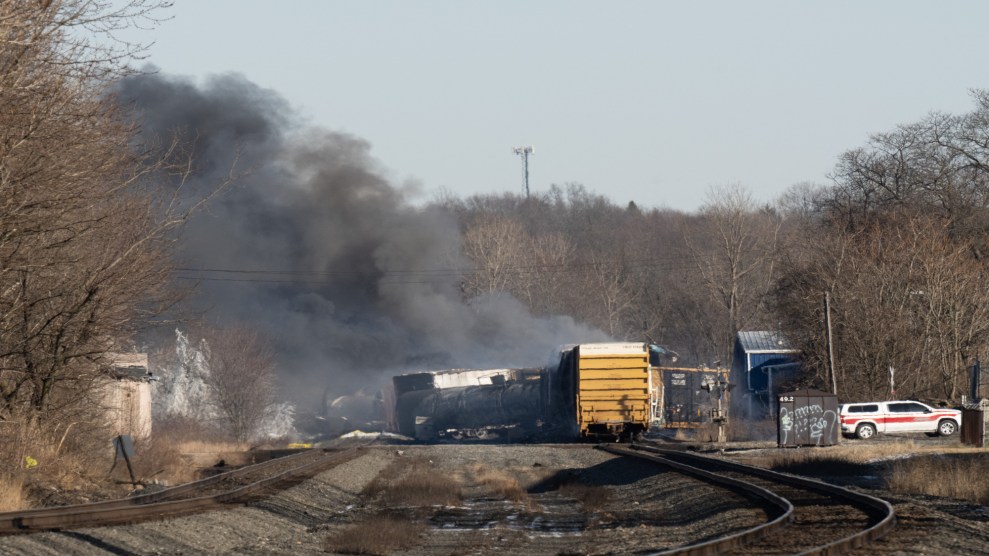In early February, days after a Norfolk Southern freight train carrying toxic chemicals including vinyl chloride, butyl acrylate and isobutylene derailed in the town of East Palestine, Ohio, authorities opted to burn off the materials to avoid an explosion. This prompted an evacuation of residents close to the site and images seen around the world of thick black smoke rising over homes and farmland.
When residents in the town of 4,700 returned, many complained of headaches, skin irritation, and respiratory issues. More than 43,000 aquatic animals were found dead in creeks within five miles of the derailment. While officials maintain that the air, water, and soil is safe, residents fear what longterm effects might lay ahead.
One concern is that the burning vinyl chloride may have produced dioxins that could linger in and around local homes and farmland. The compounds, which can take decades to fully break down, can cause cancer, interfere with hormones, and cause damage to reproductive and immune systems. The EPA on Thursday ordered Norfolk Southern to test the area for dioxins.
Michelle Graef, who lives three miles from the derailment, saw her livelihood dry up overnight. Now, she fears, no one will want to stay at any of the five Airbnb listings on her property, where guests get to ride horses and eat fresh eggs and blueberries she grows. She dreads the delivery of a cabin she recently purchased for upwards of $80,000 to expand her short-term rental income—she can no longer afford the price.
Audrey DeSanzo lives paycheck-to-paycheck within one mile of the derailment with her 9- and 10-year-old daughters. She says she wants to leave as soon as possible, but with her $14-a-hour job, lacks sufficient resources to relocate. On a recent school night, she debated whether to send her 10-year-old daughter, Nevaeh, back to school after keeping her home for the day. Nevaeh has been suffering from headaches, stomachaches, and congestion, since they returned to East Palestine. Was the air safer at home—or at school?
The small town is filled with similar stories, whose endings may not be known for years.
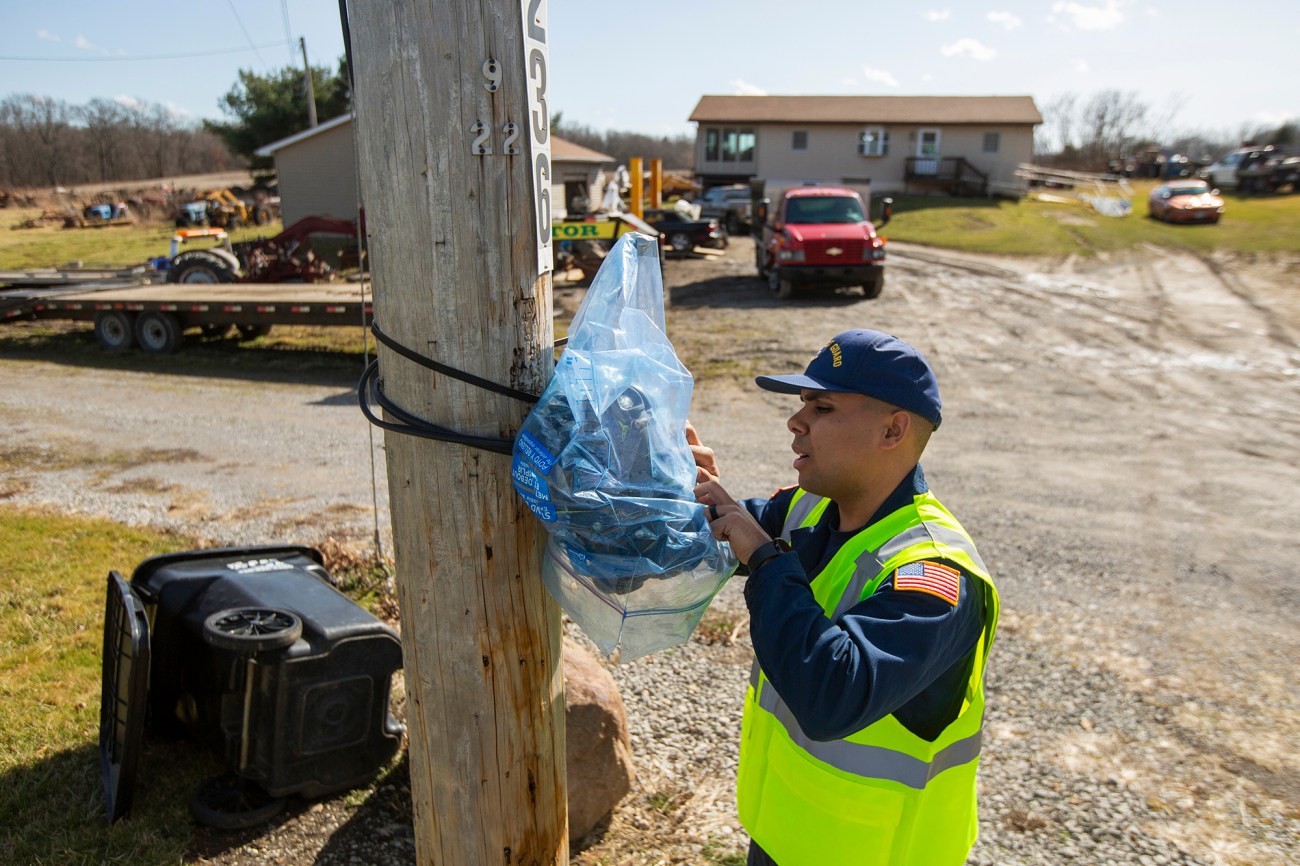
Miguel DeJesus of the US Coast Guard calibrates an EPA air monitoring system in East Palestine.

A pedestrian crosses the train tracks running through town.

Signs of support in a local shop window.

Mallory Burkett loads bottled water in the American Legion lot. “We’re not going to know what’s happening for years,” she said. “I feel like the damage is already done.”
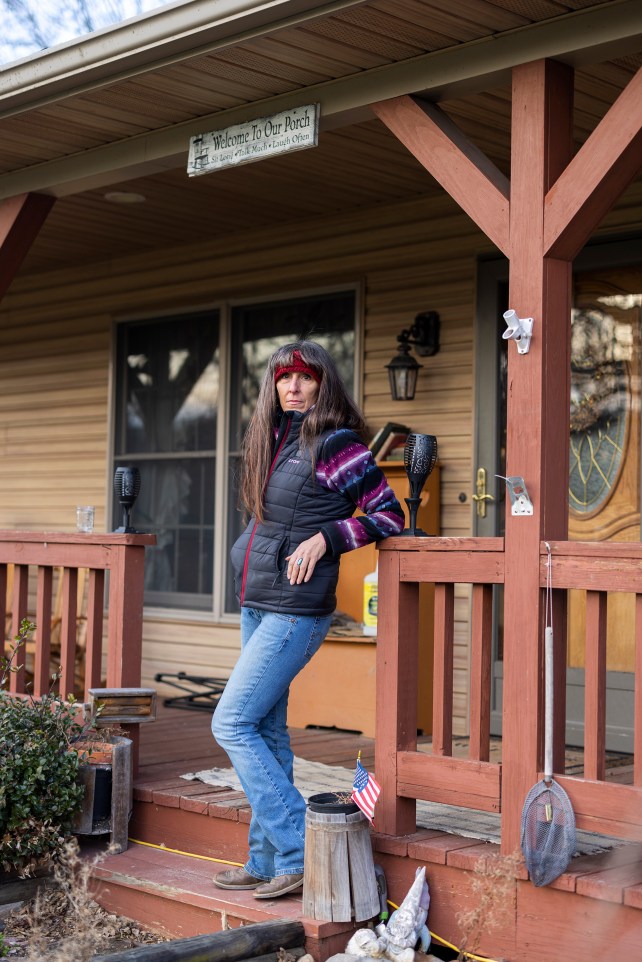
Michelle Graef’s Airbnb income vanished after the train derailed. “I went to bed on a Friday night and I woke up to a whole new life on Saturday,” said Graef, who now wants to move. “I’m not just leaving my home,” she added. “I’m leaving my business, my livelihood.”
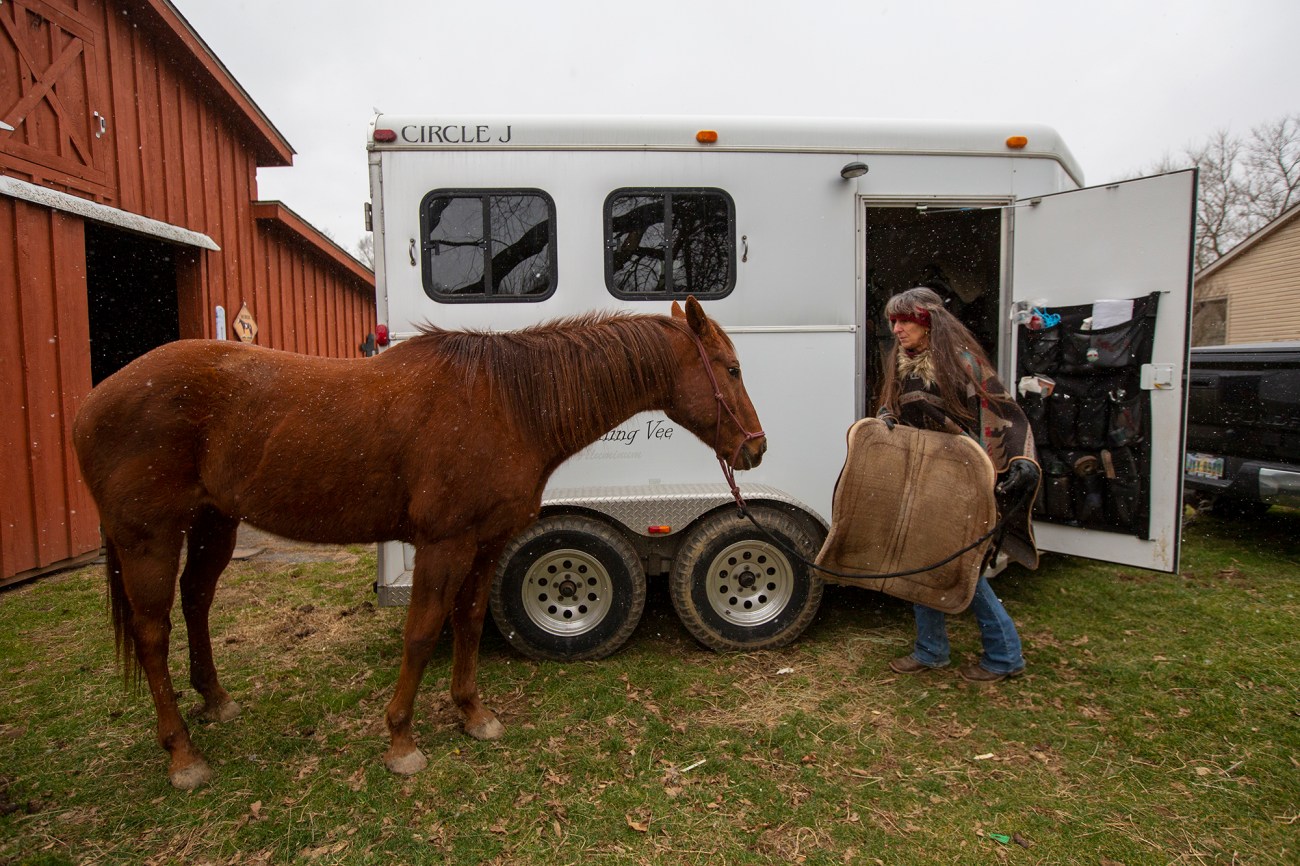
Graef prepares to saddle her horse, Mojo, for a ride. Mojo hasn’t been acting the same in recent days, she said.

Graef holds fresh eggs from her chickens. “I’m kind of promoting that healthy getaway retreat and it’s turned into a toxic chemical dump,” she said.

Graef leads her horses back to their barn after they escaped to a neighbor’s yard.
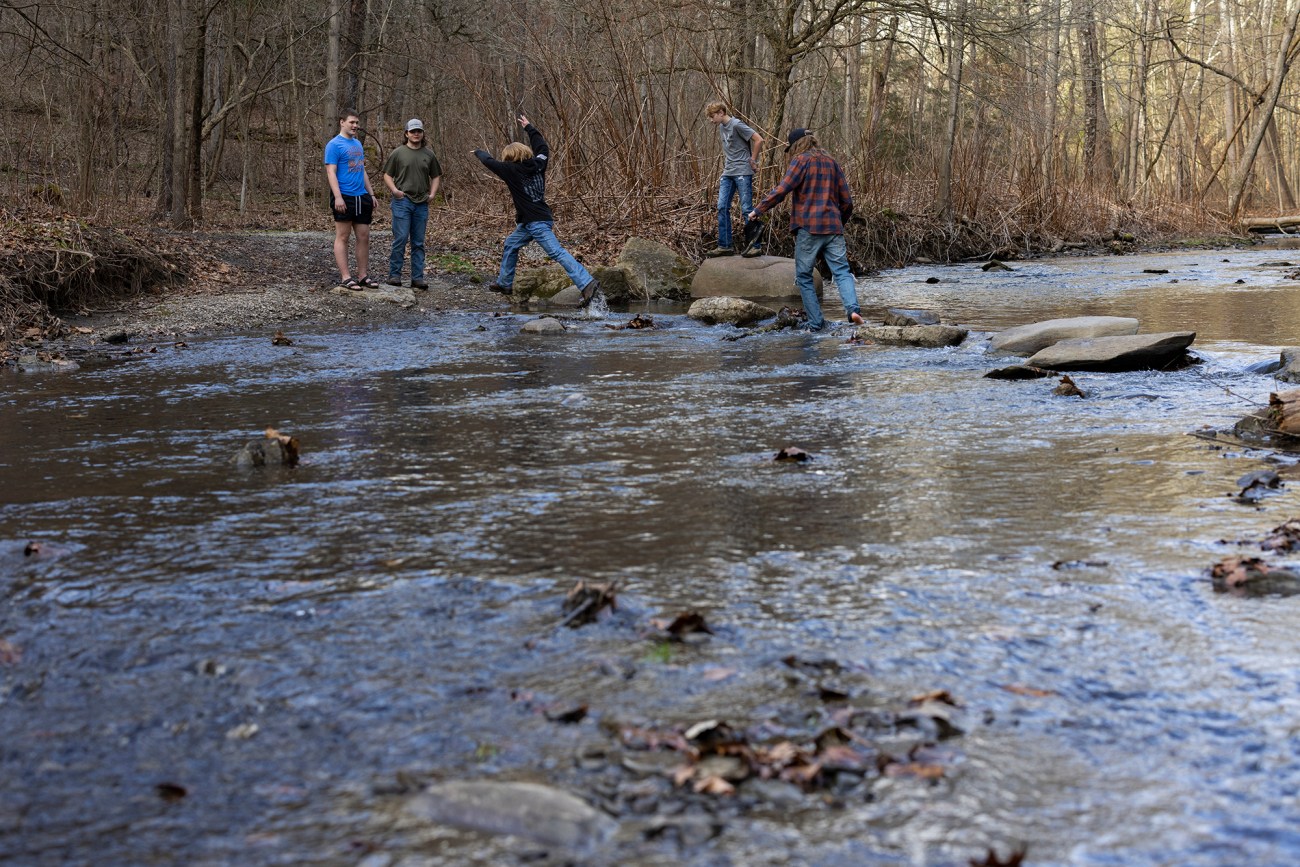
Teenagers crossing Leslie Run downstream from the derailment, which killed tens of thousands of fish, complained of a strong chemical smell coming from the creek.
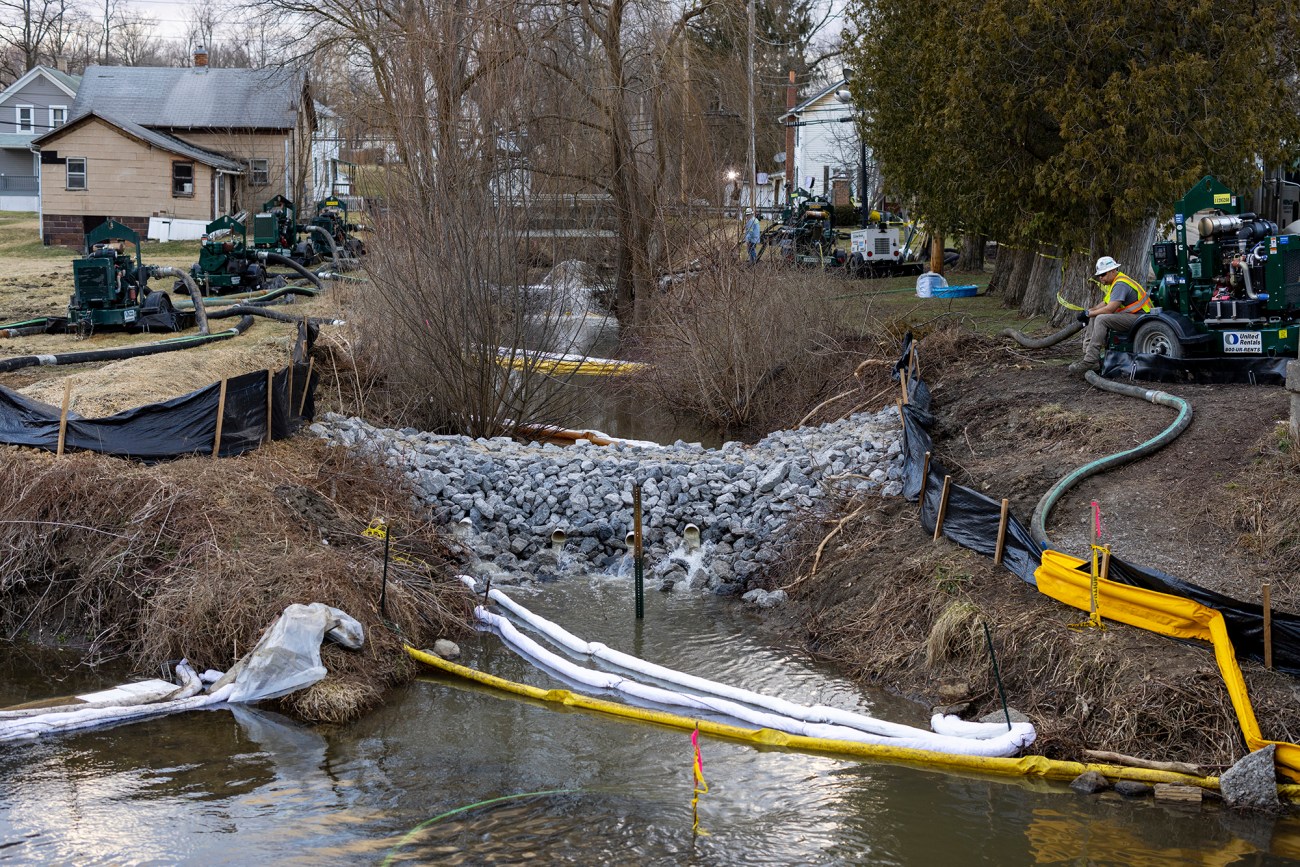
An environmental services worker rests on the banks of Sulphur Run as local cleanup efforts continued.
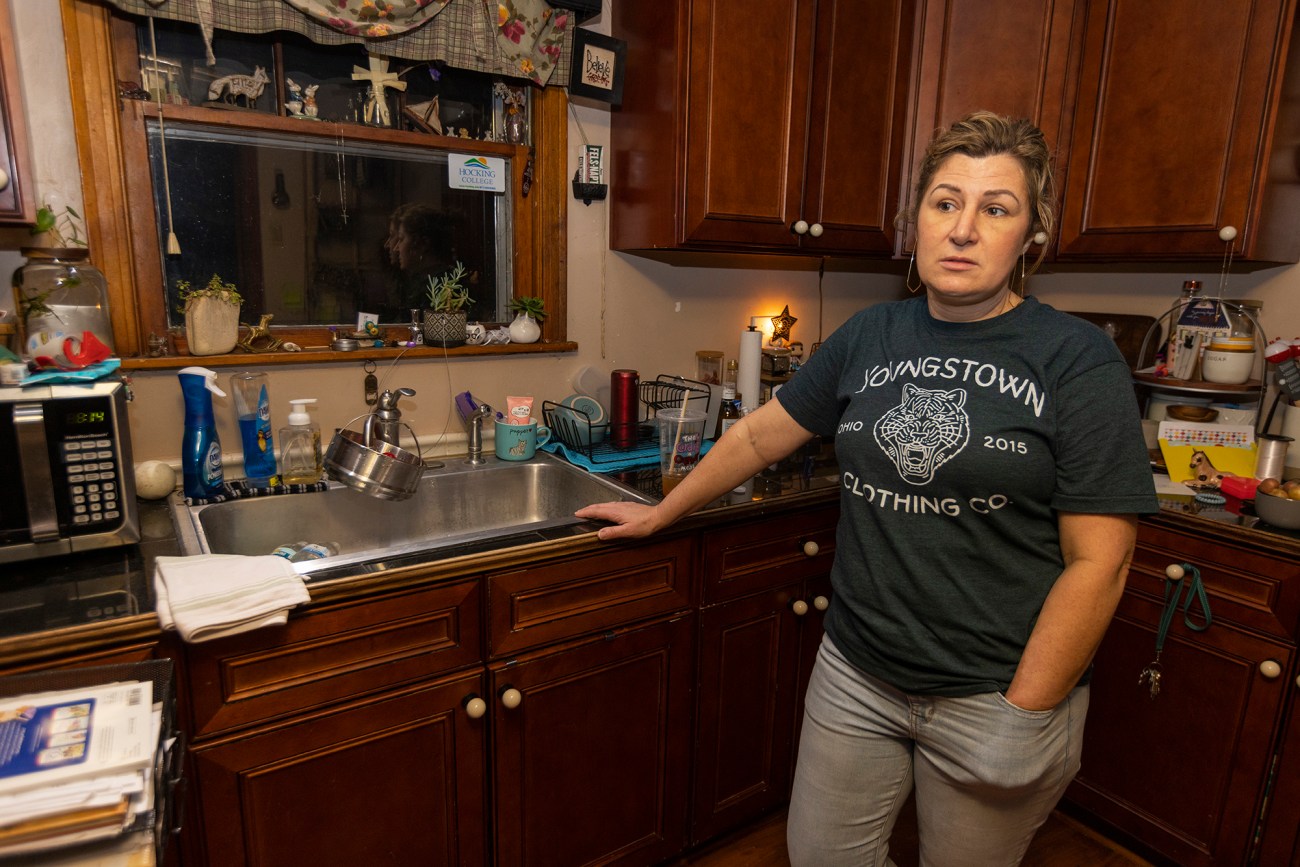
Audrey DeSanzo contemplates next steps for her family. “We’re not gonna stay,” she said. “We’re not gonna be one of the people that stay.”
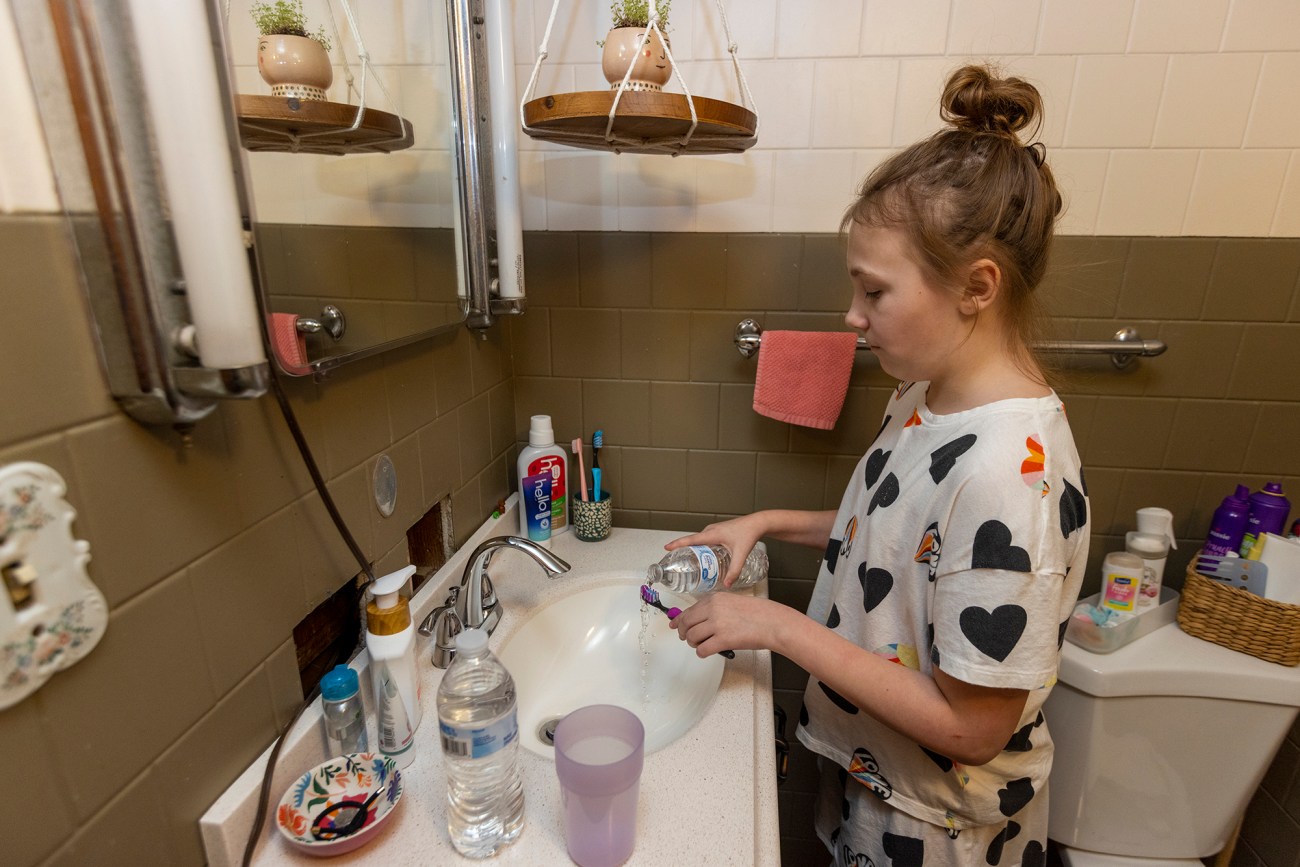
Nevaeh Master, 10, uses bottled water to brush her teeth before bed.
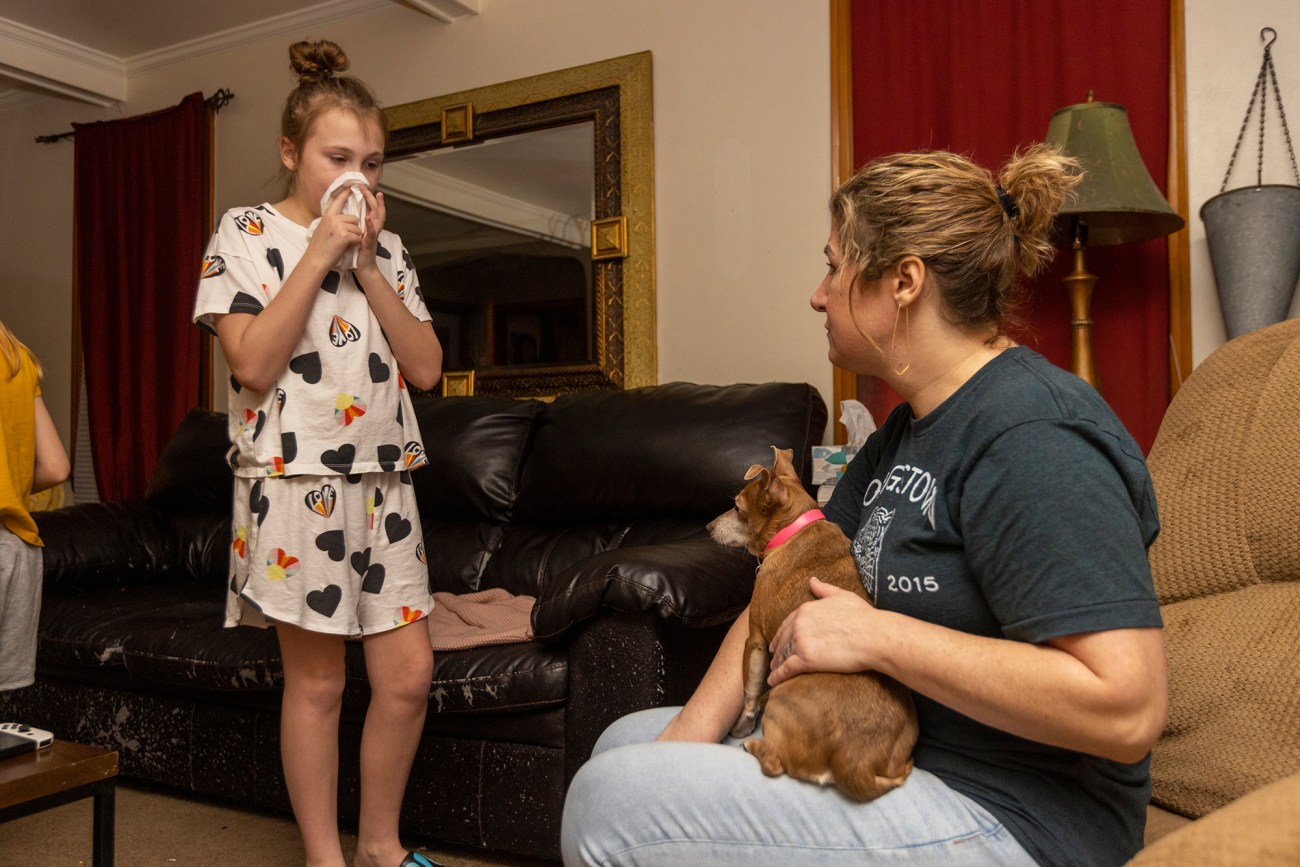
Nevaeh, 10, had stayed home from school because of headaches, congestion, and a stomachache. DeSanzo wondered if the air would be better at school.

“That’s really close to my dad’s house,” Nevaeh said as she watched TikTok videos of the derailment’s aftermath. Both of her parents live within the one-mile evacuation radius.
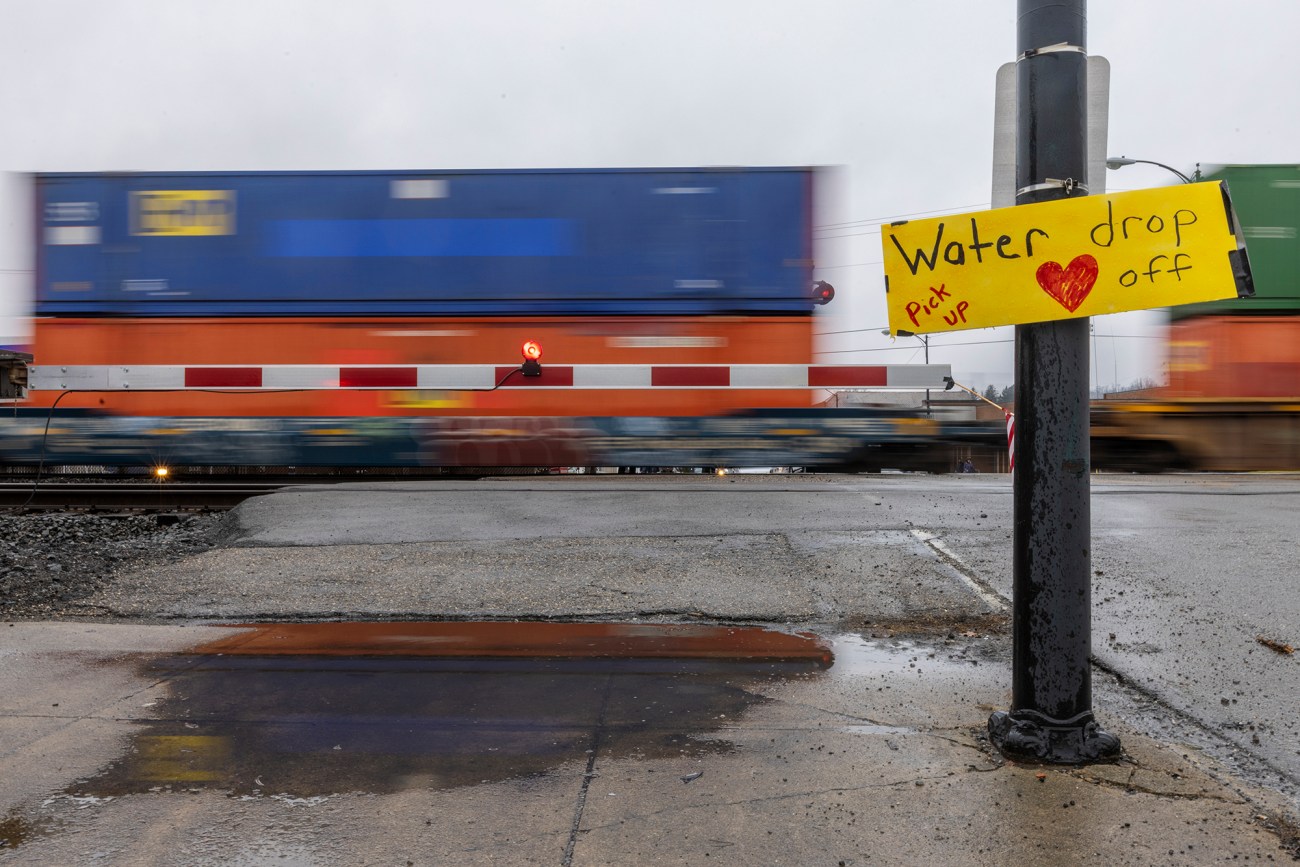
A Norfolk Southern train travels past a local water drop-off site.
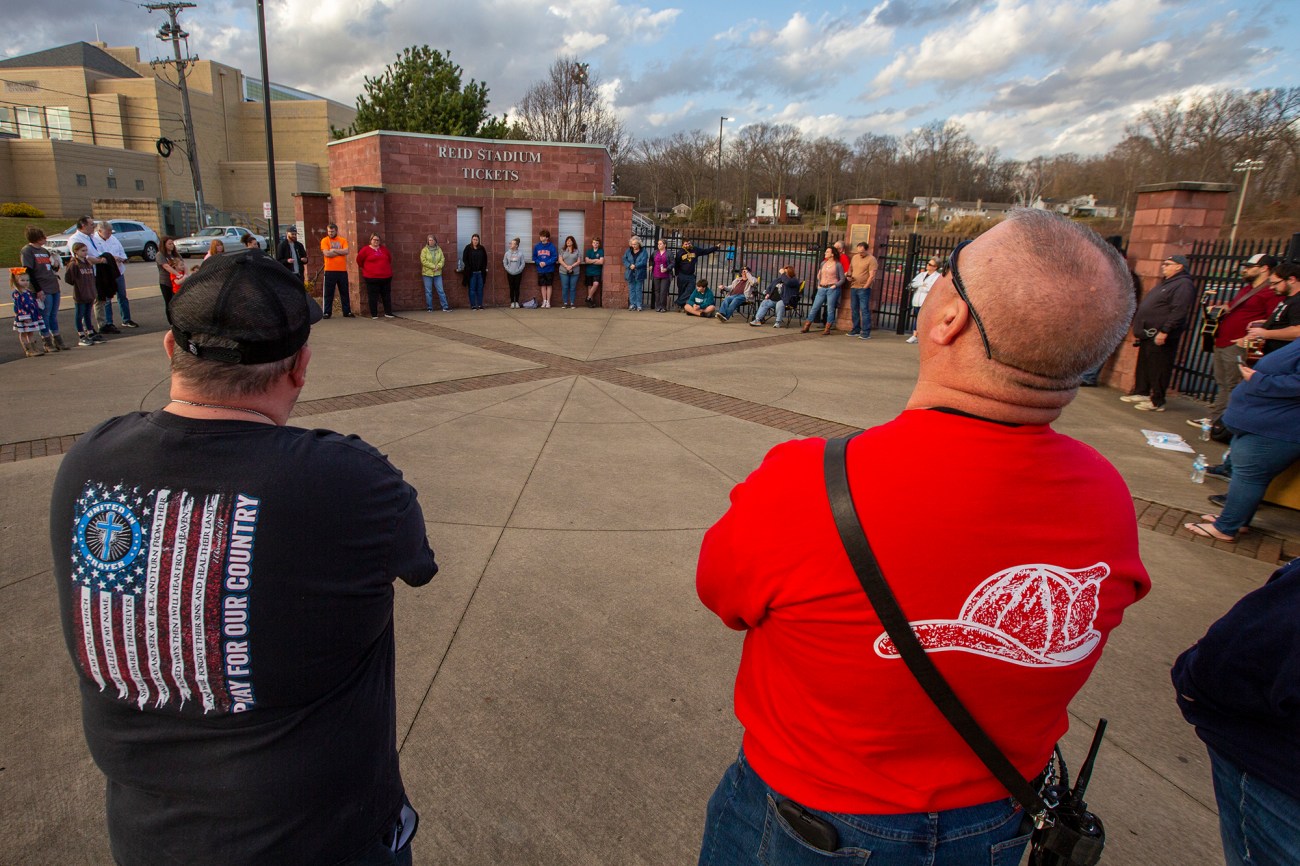
East Palestine residents gather for a prayer circle at the local high school.

A school bus drives past an EPA air monitoring system.
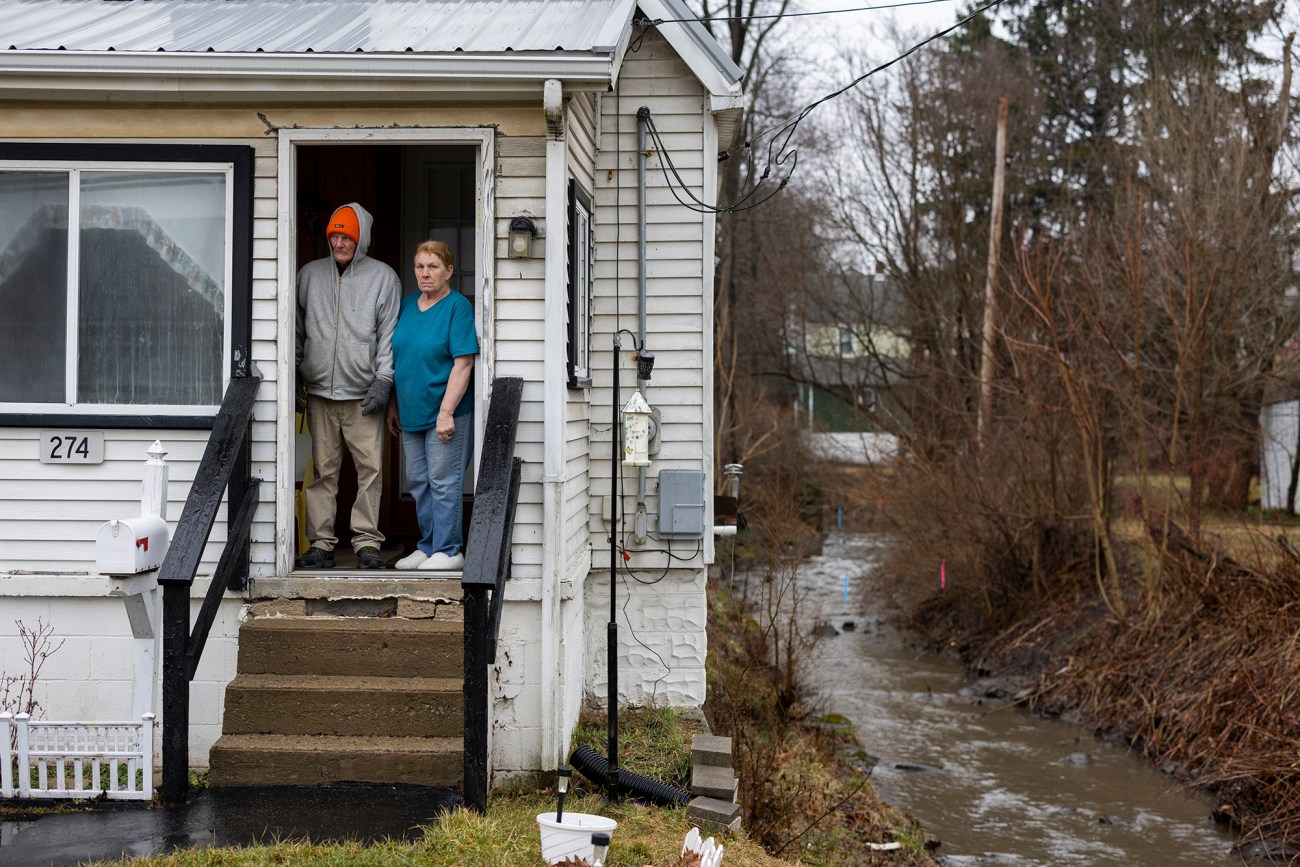
Diana Jackson and Larry Bart at their home along Sulphur Run. Jackson says she can smell the chemical odor from her bedroom.
This story was updated to reflect the recent news that the EPA has ordered dioxin testing.
